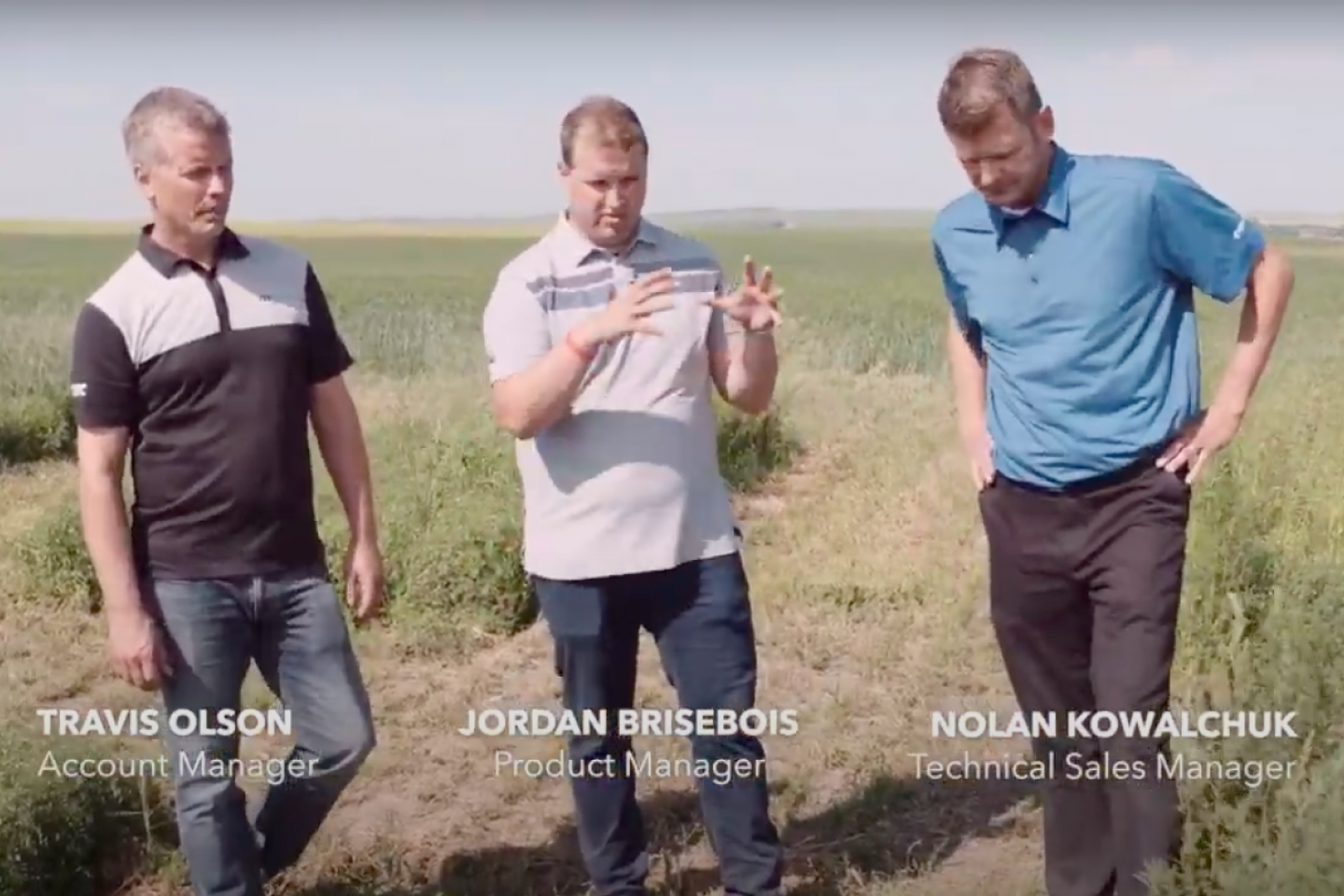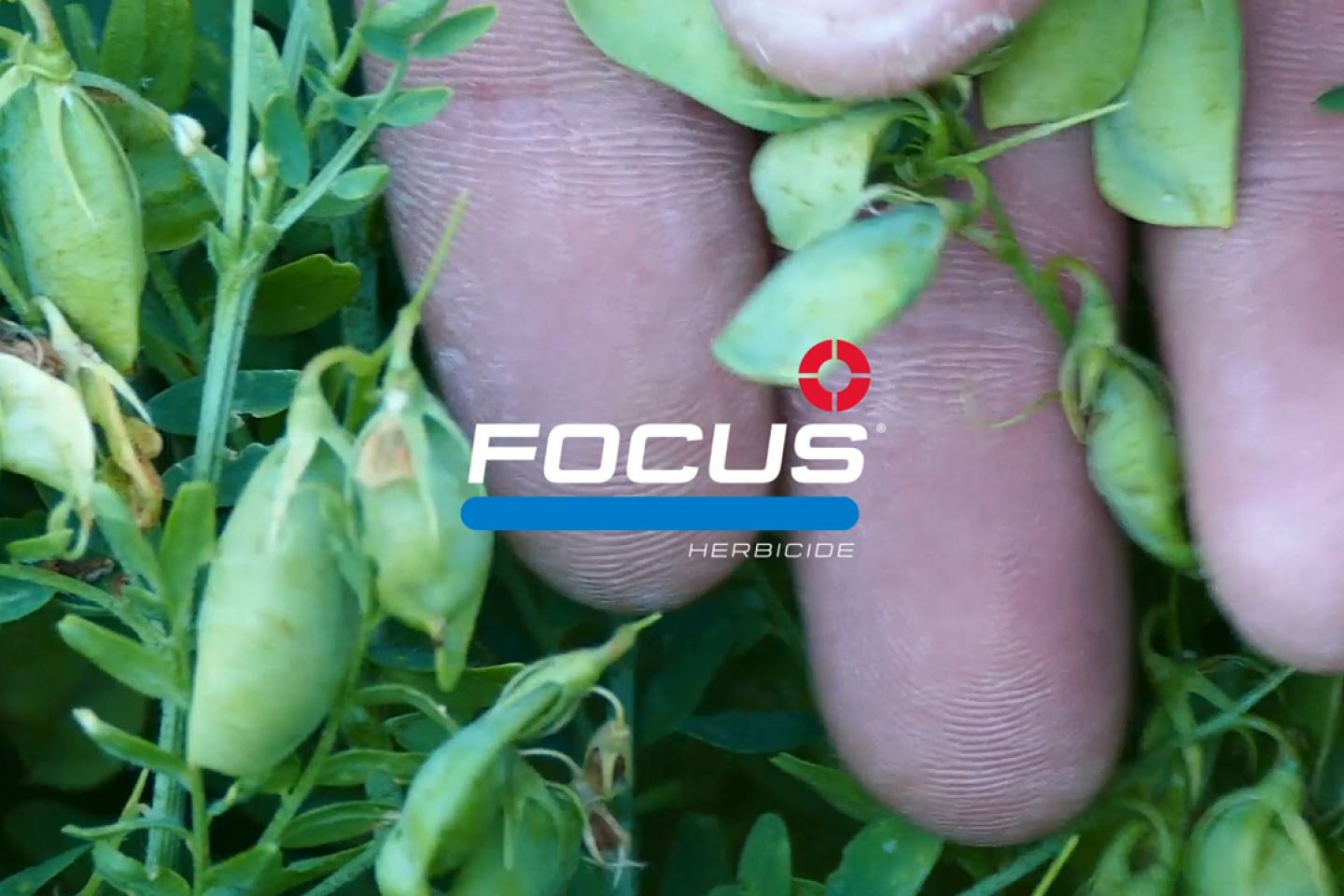Managing for the long-term wins in pulses
Growing lentils isn’t often much like caring for Holsteins but both cash crop and dairy farms thrive under a long-term plan.
“Take care of your cows and they” take care of you, ” Kevin Krahn’s dad used to say when Kevin and his wife Sherry took over the family’s purebred dairy operation in 1988. Now they grow peas, lentils, durum, some barley and canola. The wisdom from Kevin’s dad transferred into cash cropping after they sold the cows.
“I think the same think applies to the land,” says Krahn from his farm new Swift Current. “We try to make decisions based on the long-term health of each field just like we did with the cows.”
Krahn and Sherry and hired man work on the operation. They do the majority of scouting themselves, although they hire an agronomist for advice on fertilizer rates and on which weed control and fungicide products to use.
The variability in weather patterns will always be the hardest component to manage in farming. The last two springs have been drier on Krahn’s farm. “We had some rain that came just in time this past year,” he says. “In 2018 we were very dry, in 2017 we were a little dry and in 2016 we were extremely wet.”
Through all the years – wet, dry and “normal” – his attitude has stayed the same. Krahn says he will continue to do what’s best for each piece of land. He might seed a little more spring wheat or seed a new pulse crop as an experiment but otherwise he sticks to the long-term plan.
“I’m kind of set in my ways,” Krahn says with a chuckle. “I do what’s best for the dirt, not what’s a fad. That’s not going to change. I could give you the rotation on 80 per cent of our farm for the next three years.”
The one area that Krahn is willing to experiment is in technology. They recently upgraded their sprayer and he tested out a new combine with significantly more automated features than his current combine.
For Krahn, taking care of the land means sticking with his crop and chemical rotation. “We don’t really ever plant according to where we feel the markets are going,” he says. “We stick to the plan. It’s not just for the sake of managing pests but also to keep a diverse chemical rotation as well.”
Some tougher, less predictable weather years make it tempting to drop lentils from the rotation. And weed control options are limited when growing large green conventional lentils, says Krahn. He says their main weed pressures are wild oats, kochia, wild buckwheat and narrow-leaved hawk’s beard.
Four years ago, Krahn started using Focus® herbicide from FMC.
“It’s more reliable in different weather patterns,” he says. “But the main reason we like Focus® herbicide is its ability to control weeds.”
“Lentils are a poor competitor when it comes to weeds,” says Rachel Evans, technical sales manager at FMC. “There needs to be a whole farm weed management strategy if lentils are in the rotation.”
For instance, part of the weed control strategy could include increasing seeding rates. Research by Dr. Steve Shirtliffe at the University of Saskatchewan showed that higher seeding rates up to 240 plants per square metre reduced weed populations and increased yield.
“Increasing seeding rates means you’ll have a more competitive crop and have more plants competing with weeds for resources,” says Evans. “And, you’ll also get better performance out of your herbicide.”
Resistant weeds, such as Group 1- and Group 2-resistant wild oats, are limiting the number of effective weed control products in a grower’s rotation. Evans says that Focus® herbicide, made up of Groups 14 and 15, provides alternative modes of action to hit those problematic weeds.
Jesse Entz is from the B Creek Farming colony near Swift Current. Kochia is one of the biggest problem weeds the colony faces in lentils. They use Focus® herbicide to suppress wild oats, which are becoming a problem as Group 1 resistance grows. “But the biggest reason we use it is for kochia,” he says. “There wasn’t much we could do for kochia in lentils before Focus® herbicide.”
“The first year we put some down early on about 500 acres,” says Entz. They usually grow in the neighbourhood of 3,400 acres of lentils. “It was ready and activated when we needed the control in the spring.”
The colony had a lot of lentils flooded out in 2019. But even with the rain they still saw good weed control. Part of keeping a long-term plan involves spreading out weed control risk.
For instance, an early application allows Entz to sleep at night knowing his herbicide is already down even before seeding. He can concentrate on seeding and count on Focus® herbicide and the protective layer it forms to protect his crop.
Managing weeds early also means more effective in-crop control, helping to avoid harvest challenges.
Research at the University of Saskatchewan found that lentils have a long critical weed-free period. The critical weed-free period is described as the stage of crop development where a yield loss of more than five per cent would occur if the crop were not weed free. In lentils, the crop needs to be weed free from the five-node stage right through to the 10-node stage.
“It’s quite a length of time, which shows you how uncompetitive lentils are,” says Evans. “It’s important to keep that critical weed-free period in mind as growers consider the timing of their herbicide applications and as they consider extended weed control products.”
Once again, planning and an eye on the long term is key to growing a clean crop of lentils.



